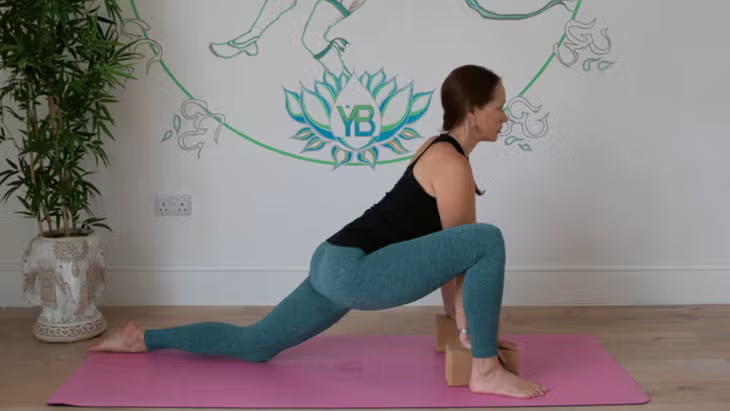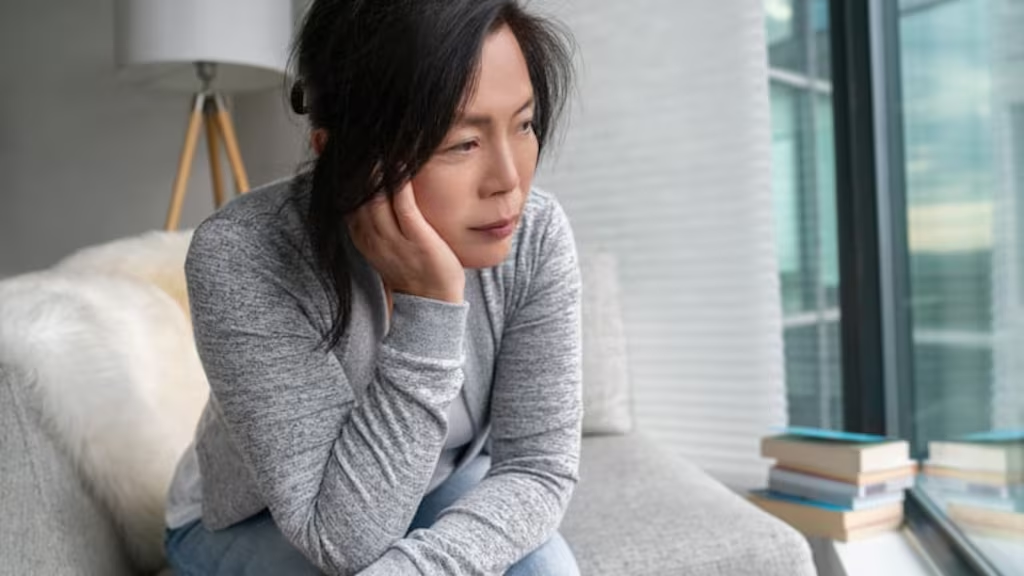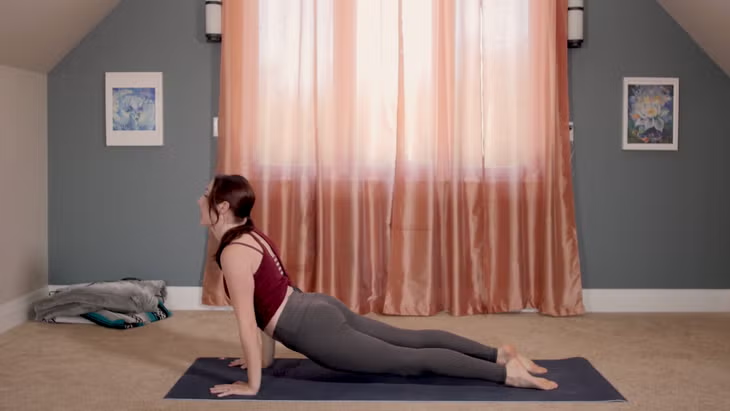Introduction to Yin Yoga: A Path to Inner Peace
In a world that feels like it’s always on fast-forward, finding calm can seem like chasing a mirage. I remember the first time I tried Yin Yoga—frazzled from a hectic workweek, I stumbled into a dimly lit studio, skeptical that sitting still could do anything for my racing mind. Yet, after just one session of long, slow stretches, I felt like I’d hit the reset button on my nervous system. Yin Yoga, with its gentle, meditative approach, is a powerful antidote to stress, inviting you to slow down and reconnect with your body and soul. This article dives into five transformative Yin Yoga practices that can help you find that much-needed calm, no matter how chaotic life gets.
What Is Yin Yoga?
A Gentle Approach to Stillness
Unlike the sweaty, fast-paced Vinyasa classes you might be used to, Yin Yoga is all about slowing down. Poses are held for 3–5 minutes, targeting connective tissues like fascia and ligaments while encouraging deep relaxation. It’s less about muscle strength and more about releasing tension and cultivating mindfulness. Think of it as a permission slip to pause in a world that’s always pushing you to go.
Why Yin Yoga Works for Stress Relief
Yin Yoga’s magic lies in its ability to soothe the nervous system. By holding poses longer, you give your body time to release stored tension—physical and emotional. It’s like giving your mind a warm hug, helping you process stress and find balance. Studies suggest that practices like Yin Yoga can lower cortisol levels, making it a go-to for anxiety relief.
Benefits of Yin Yoga: Why It’s a Game-Changer
Physical and Emotional Release
Yin Yoga doesn’t just stretch your body; it stretches your capacity to sit with discomfort. The long holds help release tight fascia, improve flexibility, and even promote joint health. Emotionally, it’s a safe space to process feelings that might bubble up during stillness—something I learned when a wave of unexpected gratitude hit me during a Butterfly Pose.
A Complement to Active Lifestyles
If you’re a runner, weightlifter, or just someone who’s always on the go, Yin Yoga balances the “yang” of your active life. It’s like the cool-down you didn’t know you needed, helping prevent burnout and injury while fostering mental clarity. It’s no wonder athletes and desk warriors alike swear by it.
Key Benefits of Yin Yoga
- Increased Flexibility: Targets connective tissues for deeper stretches.
- Stress Reduction: Lowers cortisol and calms the nervous system.
- Emotional Healing: Creates space for processing suppressed emotions.
- Improved Mindfulness: Encourages presence and self-awareness.
- Better Sleep: Promotes relaxation for deeper, more restful sleep.
Practice 1: Butterfly Pose (Baddha Konasana)
A Hip-Opening Haven
Butterfly Pose is like sinking into a cozy chair for your hips. Sitting with the soles of your feet together and knees bent outward, you fold forward gently, letting gravity do the work. It’s a pose that invites introspection while releasing tension in the hips and lower back.
How to Practice Butterfly Pose
Start seated on a mat, bringing the soles of your feet together to form a diamond shape with your legs. Place a bolster or blanket under your knees if you feel strain. Fold forward slightly, keeping your spine soft, and breathe deeply for 3–5 minutes. Focus on your breath, letting your body soften with each exhale. I often imagine my worries melting into the floor during this pose—it’s surprisingly grounding.
Why It Calms You
This pose opens the hips, a common storage spot for emotional tension. By staying in the pose, you encourage your nervous system to downshift, fostering a sense of safety and calm. It’s perfect for those moments when you feel scattered or overwhelmed.
Practice 2: Child’s Pose (Balasana)
A Restful Retreat
Child’s Pose is like curling up under a warm blanket. Kneeling with your knees wide and big toes touching, you rest your torso between your thighs and extend your arms forward or let them rest by your sides. It’s a pose that feels like a gentle hug from the universe.
How to Practice Child’s Pose
Kneel on your mat, bringing your big toes together and knees apart. Sink your hips back toward your heels, then lower your chest to the ground, resting your forehead on the mat or a block. Hold for 3–5 minutes, breathing deeply into your belly. I once fell asleep in this pose during a particularly exhausting week—it’s that restorative.
Why It Calms You
Child’s Pose gently stretches the lower back and hips while signaling to your brain that it’s safe to relax. It’s a go-to for soothing anxiety, as the forward fold creates a sense of security and introspection.
Practice 3: Melting Heart Pose (Anahatasana)
Opening Your Heart to Calm
Melting Heart Pose is a heart-opener that feels like letting go of a heavy weight. From a tabletop position, you walk your hands forward, lowering your chest toward the mat while keeping your hips over your knees. It’s a vulnerable yet liberating pose.
How to Practice Melting Heart Pose
Start in a tabletop position, then walk your hands forward, lowering your chest and forehead toward the mat. Use a bolster under your chest for extra support if needed. Hold for 3–5 minutes, breathing into your upper back and chest. The first time I tried this, I felt a rush of relief, like I was finally letting go of a grudge I didn’t know I was holding.
Why It Calms You
This pose stretches the upper back and shoulders, areas where stress often hides. By opening the heart chakra, it fosters emotional release and a sense of connection, helping you feel lighter and more at peace.
Practice 4: Sleeping Swan (Thread-the-Needle Variation)
Releasing Hip Tension
Sleeping Swan, a gentler version of Pigeon Pose, targets the hips and glutes, where many of us hold stress. You thread one leg through while resting your shoulder and hip on the ground, creating a deep but supported stretch. It’s like a reset button for tight hips.
How to Practice Sleeping Swan
From a tabletop position, slide your left knee toward your left wrist, bringing your left foot toward your right hand. Lower your hips to the mat, using a blanket under your hip for support if needed. Rest your chest on a bolster or the floor and hold for 3–5 minutes, then switch sides. This pose once helped me release tension after a long day of sitting at my desk.
Why It Calms You
By targeting the hips, Sleeping Swan releases stored emotions and physical tension. The long hold encourages mindfulness, helping you stay present and let go of mental clutter.
Practice 5: Reclined Butterfly (Supta Baddha Konasana)
A Restorative Finale
Reclined Butterfly is the ultimate relaxation pose, like lying back in a hammock on a lazy afternoon. Lying on your back with the soles of your feet together and knees falling outward, you let your body melt into the mat. It’s pure bliss.
How to Practice Reclined Butterfly
Lie on your back, bringing the soles of your feet together and letting your knees fall outward. Place bolsters or pillows under your knees for support. Rest your arms by your sides or on your belly, and hold for 3–5 minutes, focusing on slow, deep breaths. I often end my practice with this pose, feeling like I’m floating on a cloud.
Why It Calms You
This pose opens the hips and chest while promoting deep relaxation. It’s a gentle way to wind down, helping you release lingering stress and prepare for restful sleep.
Comparing Yin Yoga Practices
| Pose | Target Area | Duration | Best For |
|---|---|---|---|
| Butterfly Pose | Hips, Lower Back | 3–5 min | Emotional Release, Grounding |
| Child’s Pose | Lower Back, Hips | 3–5 min | Anxiety Relief, Restfulness |
| Melting Heart Pose | Chest, Shoulders | 3–5 min | Emotional Openness, Stress Relief |
| Sleeping Swan | Hips, Glutes | 3–5 min | Tension Release, Mindfulness |
| Reclined Butterfly | Hips, Chest | 3–5 min | Deep Relaxation, Sleep Prep |
Pros and Cons of Yin Yoga
Pros:
- Deeply relaxing for body and mind.
- Improves flexibility and joint health.
- Accessible for beginners and advanced practitioners.
- Complements active lifestyles.
Cons:
- Long holds can feel uncomfortable initially.
- Requires patience and a quiet space.
- Not ideal for those seeking high-energy workouts.
People Also Ask (PAA)
What is the difference between Yin Yoga and other yoga styles?
Yin Yoga focuses on long-held, passive poses targeting connective tissues, unlike Vinyasa or Ashtanga, which emphasize dynamic movement and muscle engagement. It’s slower and more meditative, prioritizing relaxation over intensity. This makes it ideal for stress relief and mindfulness.
How often should I practice Yin Yoga?
For optimal benefits, aim for 2–3 sessions per week, each lasting 30–60 minutes. Even one session can make a difference, especially if you’re feeling stressed. Listen to your body and adjust based on your needs.
Can beginners do Yin Yoga?
Absolutely! Yin Yoga is beginner-friendly, as it requires no prior experience and uses props for support. The focus is on relaxation, not perfection, making it accessible to all. Start with shorter holds and build up over time.
What props do I need for Yin Yoga?
Common props include bolsters, blankets, blocks, and straps to support your body during long holds. These make poses more comfortable and accessible, especially for beginners. You can find quality props at retailers like Gaiam or use household items like pillows.
Tools and Resources for Yin Yoga
Best Tools for Your Practice
- Yoga Mats: A thick, non-slip mat like the Manduka PRO provides comfort for long holds.
- Props: Bolsters, blocks, and straps from brands like Hugger Mugger enhance support.
- Online Classes: Platforms like Yoga With Kassandra offer guided Yin sessions for all levels.
- Apps: Apps like Insight Timer provide free guided meditations to complement your practice.
Where to Learn More
For deeper dives, check out books like The Complete Guide to Yin Yoga by Bernie Clark or online courses from Ekhart Yoga. Local studios often offer Yin classes, and virtual platforms like Yoga International provide accessible sessions.
FAQ Section
Is Yin Yoga good for anxiety?
Yes, Yin Yoga is excellent for anxiety. Its long holds and focus on breathwork calm the nervous system, reducing cortisol levels and promoting relaxation. Regular practice can help manage chronic stress and foster emotional balance.
How long should I hold Yin Yoga poses?
Most Yin poses are held for 3–5 minutes to target connective tissues and encourage deep relaxation. Beginners can start with 1–2 minutes and gradually increase as comfort grows. Always listen to your body to avoid overdoing it.
Can I do Yin Yoga at home?
Absolutely! Yin Yoga is perfect for home practice. All you need is a quiet space, a yoga mat, and optional props like blankets or pillows. Follow online videos or apps for guidance, and tailor the practice to your needs.
Does Yin Yoga help with sleep?
Yes, Yin Yoga promotes better sleep by relaxing the body and mind. Poses like Reclined Butterfly and Child’s Pose calm the nervous system, making it easier to fall asleep and stay asleep. Try a short session before bed for best results.
Can Yin Yoga replace other workouts?
Yin Yoga is a fantastic complement to active workouts but not a complete replacement. It focuses on flexibility and relaxation, not cardio or strength. Pair it with activities like running or strength training for a balanced routine.
Tips for a Successful Yin Yoga Practice
- Create a Calm Space: Dim lights, play soft music, and remove distractions.
- Use Props Generously: Bolsters and blankets make poses more comfortable.
- Breathe Deeply: Focus on slow, steady breaths to deepen relaxation.
- Be Patient: Embrace discomfort without pushing past your limits.
- Practice Regularly: Consistency amplifies the calming benefits.
Conclusion: Embrace the Stillness
Yin Yoga isn’t just a practice; it’s a rebellion against the hustle of modern life. Each of these five poses—Butterfly, Child’s, Melting Heart, Sleeping Swan, and Reclined Butterfly—offers a unique path to calm, helping you release tension and find peace. I’ve found that even on my most chaotic days, a 20-minute Yin session can shift my perspective, like a gentle reminder that stillness is strength. Whether you’re a beginner or a seasoned yogi, these practices are an invitation to slow down, breathe, and reconnect with yourself. So grab a mat, dim the lights, and let Yin Yoga calm you TF down. For more guidance, explore resources like Yoga Journal or local classes to deepen your practice.



